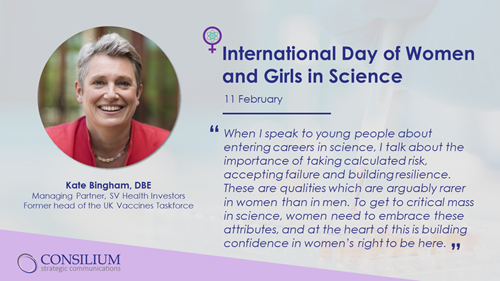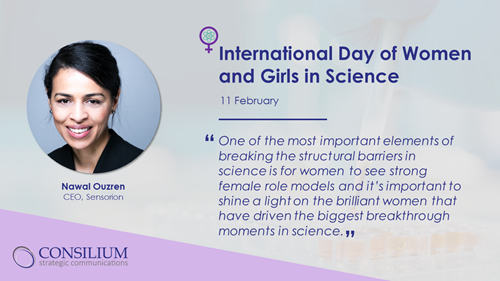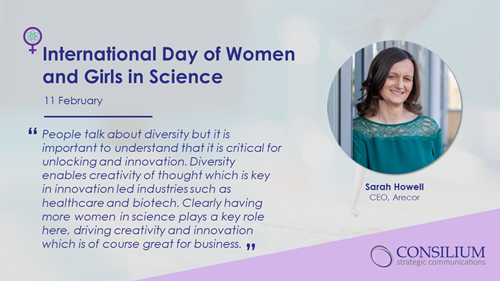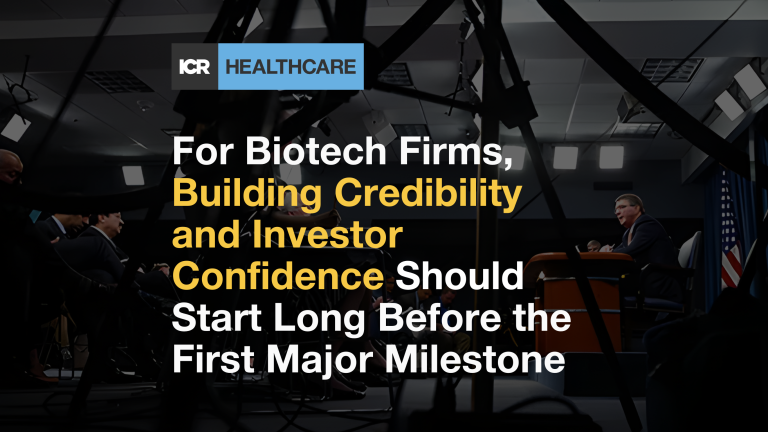Kate Bingham, DBE, Managing Partner, SV Health Investors, former head of the UK Vaccines Taskforce

When I was asked in May 2020 at the height of the COVID-19 pandemic by the then UK Prime Minister, Boris Johnson, to chair a taskforce to develop a vaccine for COVID-19, my first reaction was “Why me?” I felt I wasn’t sufficiently qualified for the task because I wasn’t a vaccine expert. As it transpired, my skills, contacts and a VC mindset were exactly what was needed.
As history records, I did take the job following pressure from the government and outrage from my family that I had entertained the idea that I was not up to the job. We went on, with the help of the best minds in science and business, a huge act of will and a lot of burning of midnight oil, to secure 350 million doses of six vaccines for COVID-19 over a period of time which I and others had thought impossible.
I am not a person given to imposter syndrome and certainly not one to think as a woman I was not usually the best person for the job. But if I, as a trained biochemist with an MBA from Harvard Business School and someone who has run an investment fund which has fuelled the creation of many successful commercial medicines, had a moment of self-doubt, there is still work to do in making women feel that they have a seat at the table in science.
It matters both for women and for science for women to have a seat at the table. Women are good at problem solving, creativity and collaboration and often able to see problems from a different perspective: qualities science needs. For decades, one half of the population has dominated the business of developing drugs for the other half, something which limits our ability to create effective medicines for women and getting more women into drug discovery and development is critical.
We’ve come a huge distance since the days of Rosalind Franklin, a British chemist whose work was central to the understanding of the molecular structures of DNA, RNA and viruses and who was initially denied a place at the University of Cambridge before accepting a place at King’s College London where she wasn’t allowed into the common room due to her sex. Today there are women leading important research projects, leading clinical trials, publishing scientific papers and running science-based multinational companies, and no-one today would seriously question the right of these women to do what they do based on their sex alone. This is seen in the SV portfolio where we are extremely proud that the vast majority of our biotech companies have female scientist leaders. But these women are still rare enough to invite comment.
When I speak to young people about entering careers in science, I talk about the importance of taking calculated risk, accepting failure and building resilience. These are qualities which are arguably rarer in women than in men. To get to critical mass in science, women need to embrace these attributes, and at the heart of this is building confidence in women’s right to be here.
Until society ceases to doubt the capabilities of women, there is work we can all do to remind us of the value women bring to science.
Ros Deegan, Chief Executive Officer, OMass Therapeutics

Across the globe, we face many challenges – debilitating diseases, environmental challenges and dwindling supplies of natural resources. Scientific discovery is critical if we want to find solutions to these challenges. And given that women make up >50% of the population (yes, women live longer!), we need stronger female representation in science, both in industry and in research, to take this on.
As the female CEO of an emerging biotech company founded by a female academic scientist and with a female majority Board, I see every day the positive impact that women can make if they pursue their scientific goals. Our founding scientist, Dame Carol Robinson, pioneered a new way of interrogating biology at high resolution using native mass spectrometry to interrogate interactions within a molecular ecosystem and the impact that drug candidates have on these interactions.
This technology platform allows us to interrogate not just the target but how it interacts with its ecosystem, separate from the confounding complexity of the rest of the cell. I joined OMass as CEO four years ago to transition Carol’s academic work to a full powered drug discovery engine. Two women – spanning industry and academia – with the common goal of driving science forward for the benefit of patients with immunological and rare diseases.
Nawal Ouzren, Chief Executive Officer, Sensorion

I’m proud to lead Sensorion, a great example of a company which champions inclusivity and diversity in science.
Sensorion, a biotech focused on delivering innovative solutions to hearing loss, has many women in senior leadership positions, including a female CEO and Chief Medical Officer, Geraldine Honnet. Sensorion is by no means the only example of a science-based company with women in leadership positions, but these are still the exception to the rule. Although roughly half of Europe’s scientists are now women, we are still significantly under-represented in senior roles in science, both in the academic and private sectors.
According to a 2020 survey by BIO, women make up just under half of all membership companies but less than one third of executive teams and less than 20% of Boards.
International Day of Women and Girls In Science gives us a fantastic opportunity to examine how we can get to a place where female-led companies are no longer worthy of comment and where women are participating fully at senior levels.
One of the most important elements of breaking the structural barriers in science is for women to see strong female role models and it’s important to shine a light on the brilliant women that have driven the biggest breakthrough moments in science.
Mentoring is another critical tool for female advancement. Women finding their way through an industry depend on the guidance and advocacy of other senior female leaders. This is an invaluable element of helping support women through their journey into senior positions and helps the mentor as much as the mentee. During my time on the “Women in Bio” Board in Chicago, I was given the opportunity to support and mentor some incredible women in life sciences, in return, gaining a great deal of valuable knowledge from them.
International Day of Women and Girls in Science is a great prompt to everyone working in the scientific industries to reflect on the progress or women, to make an honest assessment of where, as an industry, we are falling short and to set robust goals for improvement.
Dr Melanie Lee, Chief Executive Officer, LifeArc

The world has changed a great deal since I became a scientist. Women remain under-represented in science roles, but are now seeing a shift, as younger people reject out-dated gender stereotypes and flexible working patterns have become the norm. This has of course been helped by technology – giving women the flexibility to work anywhere, at any time.
Does it matter? Medical research is a field that simply needs the best scientists and researchers, of any gender. But I’m proud that 50% of employees at LifeArc, a medical research charity, are women. And I know that when the next generation of budding female scientists sees greater diversity within the sector, they feel more encouraged and able to follow the same path. Science wins when it gets the brightest minds and talents, and that means everyone must have an equal opportunity to pursue it.
For women, a career in science, as in many fields, can be challenging. We manoeuvre our way through key points in life that may affect us – be that maternity leave, a growing family, or looking after ageing relatives. It’s so important to have a network of people who will support and mentor you. I believe that leadership is all about encouraging confidence in people. My own success is partly due to positive influence early in life, as my parents taught me that anything was possible with hard work.
People, but especially women, gain confidence when time is set aside for adequate, thoughtful preparation of everything from content to presentation style, so we have to build this into our schedules – and make time to support others. Getting personally involved is a huge part of working in the life sciences sector.
One of the biggest challenges for a female scientist is how to deal with unwanted and unsolicited “advice” which comes from a perspective which assumes you, as a woman, are less capable. I learned early on in my career that women often receive such “advice”. Often people dispensing the advice may genuinely feel they are trying to help, but their perspective often contains a large amount of sexist judgement.
My mental trick, acquired over many years, is to put this in what I call the “Outperform” box in my brain. If someone can think that or say that to me, they are judging me by parameters I don’t intend to be limited by – so I work out what I need to do to outperform these expectations and disabuse anyone of that perception of me in future.
This does not have to involve conflict, or even response to the “criticism” or “advice”. It simply requires you to get on with doing better and rising above those critics. Eventually they can look back at you and see you exceeded their expectations (but not your own)! This approach has helped me numerous times in shrugging off judgement which I knew had the potential to railroad my confidence.
All female scientists will likely have come across similar. All of us will have to improvise our own techniques for dealing with this. But learning to deal with it is critical to build the confidence you need.
Sarah Howell, Chief Executive Officer, Arecor

People talk about diversity but it is important to understand that it is critical for unlocking and innovation. Diversity enables creativity of thought which is key in innovation led industries such as healthcare and biotech. Clearly having more women in science plays a key role here, driving creativity and innovation which is of course great for business.
One of the key hurdles, in my view, in getting more women and girls into senior roles in science has always been lack of role models, so women and girls can see other people who “look like them” and who can inspire them.
This is improving: early in my career, I was routinely the only female in the room and often the youngest person by many years. This can be intimidating. There do appear to be more women in Senior Leadership and decision-making roles in science now, but still some way to go.
What has helped me a lot is female role models and mentors on my way up: I found my time at BTG under the leadership of Dame Louise Makin very inspiring. She was hugely successful in defining and executing BTG’s growth strategy, and in part, this was through the culture of bringing in the best talent and creating a culture that valued diversity.
We still see a disconnect between the numbers of women in science in junior roles and the percentage that progress to senior roles.
In my view there is still inherent bias within the system, where women are judged on what they have already delivered and men on their potential.
I think this is a combination of self-selection bias, where the leader is giving the role to somebody similar to themselves and with a similar self-promotion style. I still find that men tend to be more comfortable outlining their successes and happier to gloss over gaps in their experience than women – but we can fix this!
If there’s diversity across a company, it reduces the impact of self-selection bias and there is a responsibility for senior leaders today to be aware of and to mitigate their own inherent biases/
On the International Day of Women and Girls In Science, I am very optimistic for the future, we have a rich history of success in science and innovation in the UK and the topic of diversity and how to address this is very much on the table.
We do need to increase the pace, but I’m very proud of the role Arecor is taking as a successful female-led business and of other women across the industry.



